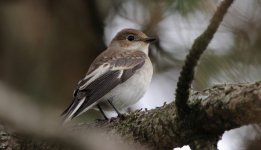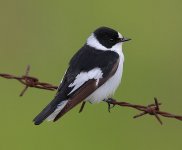jbpixels
Well-known member
I spotted a small group of flycatchers on migration today. On first sight Ficedula hypoleuca but going through my raw files made doubt about a safe ID on this one.
P L E A S E give me ID support.
Munich, today, park, oak grove and open woodland.
P L E A S E give me ID support.
Munich, today, park, oak grove and open woodland.
Attachments
Last edited:





